Rhinoplasty in Shiraz
What is included?
Surgery and hospital stay
Visa and tourism
24/7 online consultation
Free SIM card and internet access
Medical package (doctor's appointments, medication, pre and post-op tests and X-rays)
Medical interpreter
8 nights stay in a 5-star hotel
Airport pick-up and transportation (transfers between the airport, hotel and clinic/ hospital)
The city you have chosen (Shiraz) has the first tourism rank in Iran. What may be new to you is that Shiraz also has great potential to represent the best physicians and surgeons. Now that you are thinking about rhinoplasty in Iran, you would like to know the best plastic surgeons in Iran, ENT specialists, and surgeons in Shiraz, see their before and after photos, get to know the city environment where you are going to have a nose job and know its hospitals.
Rhinoplasty is a case-dependent surgery, the exact cost of surgery will be determined after an online assessment of your nose condition and the services you’d like us to arrange for you.
Read more about : Hair transplant in Shiraz
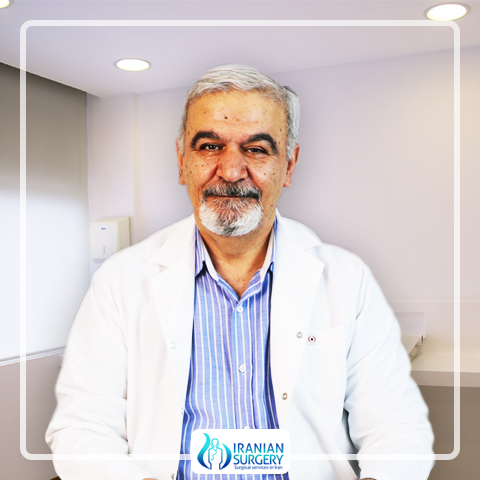
Dr. Gandomi
Otolaryngologist (ENT)
Associate professor at Shiraz University of Medical Sciences
Studied in Shiraz and completed a postgraduate course in America, Australia, and Austria in the field of rhinoplasty and endoscopic sinus surgery, nose surgery, and cosmetic and deviated septums.
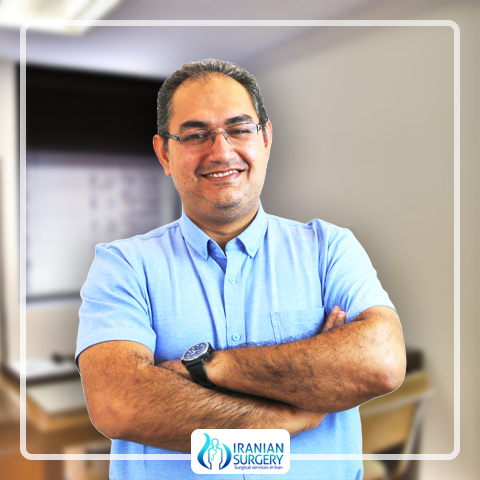
Dr. Dastjerdi
Specialist Plastic Surgeon, Cosmetic and Reconstructive Surgeon
Board-Certified Plastic Surgeon
Member of the Iranian Plastic Surgeons Association.
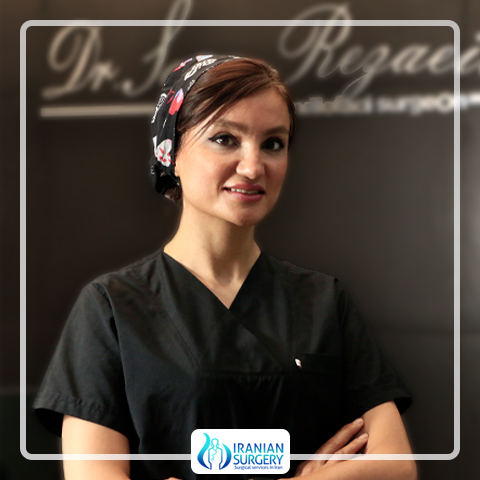
Dr. Rezae-Farid
Dr. Sara Rezaei Farid, Maxillofacial Specialist
Specialized Surgeon in Face, Head, Neck, Nose, and Jaw surgery, Chin Implant, Jaw Augmentation, and V shape Jawline
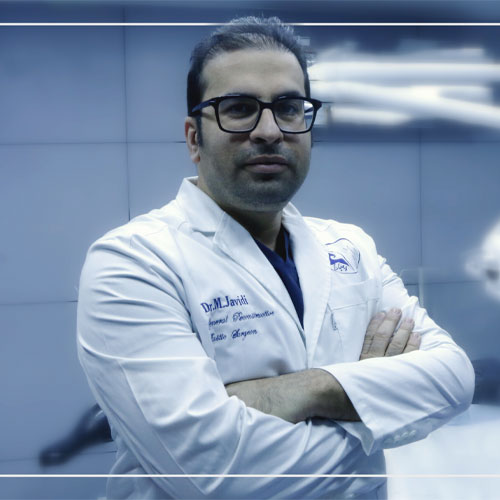
Dr. Javid
Cosmetic and Reconstructive Surgeon
Area of Experty: Rhinoplasty, Abdominoplasty, Sculpting, Breast prosthesis, Mastopexy, Gynecomastia, Full facelift, Liposuction, thigh lift, buttock lift, Etc
Read more about : Best plastic surgeons in Iran
Hospitals
Hospitals, where surgeries are performed for international patients, are as important as surgeons. Due to having up-to-date medical equipment, most experienced doctors in Shiraz recommend Kowsar Hospital and its IPD to their patients.
. Kowsar Hospital was founded in 2005 by a group of benefactors. This highly specialized medical center includes 18 advanced modular and angiography operating rooms.
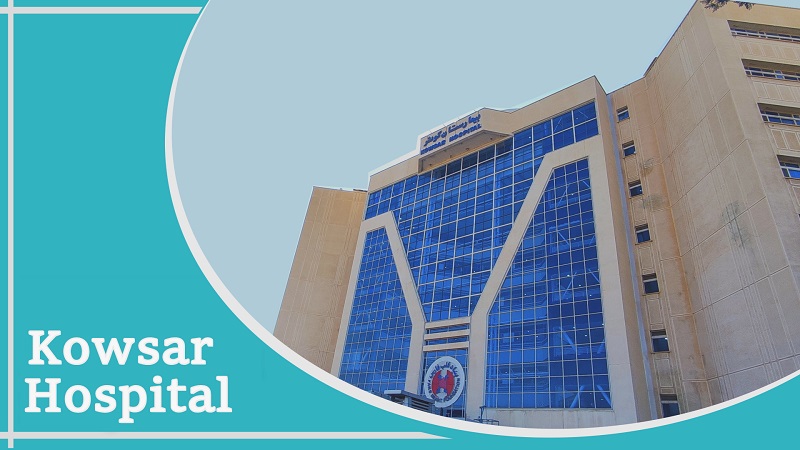
Before and After Photos
Take a look at ‘before and after’ photos of people who got their nose jobs done in Iran.
Read more about : Rhinoplasty in Iran before and after
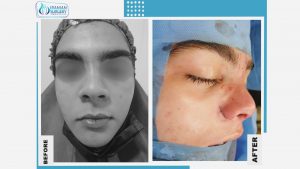
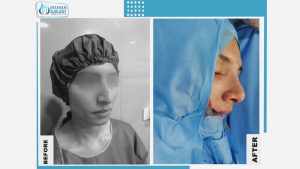
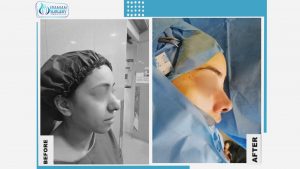
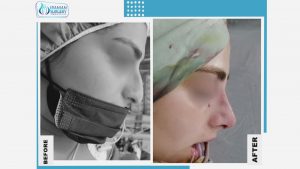
Steps of Rhinoplasty with Iranian Surgery
You have gathered your information about rhinoplasty in Iran (Shiraz), read our website, and familiarized yourself with the packages and facilities of Iranian Surgery. What are the next steps? Who are the top rhinoplasty surgeons in Iran or Shiraz? How to get the Visa? What will happen after the booking?
Here are the steps that will enlighten your nose job journey in Shiraz:
Day to Day
After booking the package, Iranian Surgery will apply for your E-visa/Medical-Visa, book your hotel and the hospital for your nose job in Shiraz, and above all, the surgeon you have chosen. Once your visa is issued, you can purchase your tickets, and we shall meet you on the other side:
Day 1
Airport reception, taking you to your hotel to get some rest, Receiving the Sim card, First Check-up with the surgeon, X-ray or scans (if needed), and Blood test.
Day 2
The Surgery
Day 3
Post-op tests, the permission issued by the Surgeon to discharge you from the hospital and return to the hotel.
Day 4
Recovery at the hotel and follow-up (medication and diet)
Day 5
Open Plan Day (Tourism, souvenirs, etc.)
Day 6
Open Plan Day
Day 7
Second visit with the Surgeon, taking the cast off, medical tape on the nose and you will be guided by the surgeon to do it yourself and receive medical instructions.
*Seven days after the surgery
Day 8
Check-out and Departure
You might think that this is the end, you will leave Iran after the nose job and be done with Iranian Surgery, but we will stay in touch with you. If you have any problems or questions, we are just a click away…
Medical Tourism in Shiraz
In medical travel, a city is usually viewed from a medical perspective, but, once you set up a travel plan, you can take advantage of both medical and tourist attractions, offered by the city. It is worth mentioning that Shiraz is famous not only for poets such as Hafez and Saadi, but also for historical places like Nasir Mosque, Vakil Bazaar, and Persepolis.
For those who come to Iran and Shiraz, getting to know the culture of Shiraz along with the successful result of your surgery can be a good souvenir.
Shiraz has been the capital of Iran twice and has developed numerous art schools.
Considering the medical background of Shiraz and its well-known doctors, turning Shiraz into a medical and surgical center is not strange.
When you are in Iran (Shiraz) for an operation or treatment, you may find time to do some sightseeing. Iranian Surgery can arrange such visits based on your schedule and interest. In the following paragraphs, we mention only three of them.
Eram Botanical Garden, the most famous garden in Shiraz, is among the nine Persian Gardens registered with UNESCO World Heritage.
Persepolis, the cultural capital of Iran during the Achaemenid dynasty, is another UNESCO World Heritage property and is a synthesis of all the arts of the ancient world and reflects the peacefulness of Iranians.
Although Shiraz has many places to visit, some remain unknown to non-Iranians, such as the Qalat and its intact nature. Qalat is a historical village and is suitable for those who want to get away from the hustle and bustle of city life and enjoy the pleasant weather, outstanding natural beauty, and various cafes. Qalat mountains and the surrounding gardens are only half an hour away from Shiraz.
Plastic surgery in Shiraz
How much does rhinoplasty cost in Shiraz?
Choosing the Best Plastic Surgeon in Shiraz
Cosmetic surgery(Plastic surgery) is a major decision and you want to get it done by a foremost professional surgeon. Check out these 6 tips for choosing the best plastic surgeon.
As the overall stigma surrounding cosmetic surgery continues to decline, more and more people are considering it.
Whether you want to go up a cup size, fix a crooked nose, or just look a decade younger, there is seemingly no limit to what plastic surgery can help you accomplish.
Above all, it can help you feel more confident, deepen your self-love and even enable you to make great strides in both your personal and professional life.
If you’re thinking about having a cosmetic procedure performed on you, don’t settle for anything less than the best plastic surgeon in the best city in Iran: Shiraz.
Rhinoplasty in Shiraz with Iranian Surgery
With Iranian surgery, the cost of rhinoplasty in Iran in the highest quality Iranian hospitals in Tehran is about $ 1,800 and in Shiraz is about $ 1,500. The cost includes surgeon fees, operating room, preoperative tests and postoperative medications.
The Iranian Surgery team will provide you with comprehensive information about rhinoplasty in Iran and will provide you with the best plastic surgery centers as well as the best plastic surgeons.
How much does plastic surgery cost in Shiraz?
Rhinoplasty: $1600_ $2500
Liposuction: $1500_$3800
Tummy tuck: $1500_$4500
Face lift: $700_3500
Cheek implants: $1600
Buccal fat removal: $700
Eyelid: $800_1200
Breast augmentation: $1700_2000
Breast implant: $2000
Breast reduction: $1700
Breast lift: $1500
Revision rhinoplasty: $2500
Male breast reduction: $1500
BBL(Buttock lift): $1000_2500
Vaginoplasty: $800_1400
Labiaplasty: $1200
Cat Eye: $1300
Arm Lift: $700_1000
Eyebrow lift: $1300
Neck Lift: $600_1000
Forehead Reduction: $1800
jaw surgery in iran: $3000
Dimple Creation Surgery : $800
Thigh lift: $800_1500
Who is the number one plastic surgeon in Shiraz?
Dr. Dastjerdi is one of the top plastic surgeons in Shiraz who has successfully completed many cosmetic surgeries.
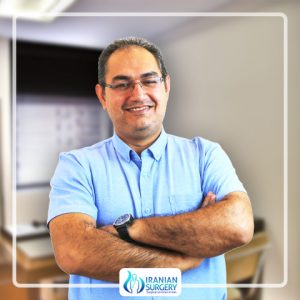
Best rhinoplasty surgeon in Shiraz
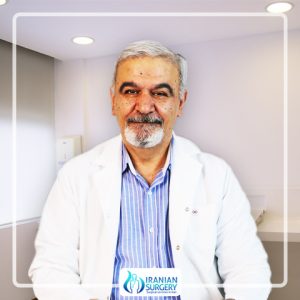 Dr. Gandomi is one of our top rhinoplasty surgeons in Shiraz who performs of facial reconstructive surgeries including nose jobs
Dr. Gandomi is one of our top rhinoplasty surgeons in Shiraz who performs of facial reconstructive surgeries including nose jobs
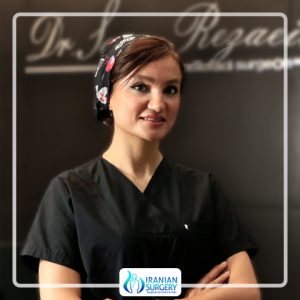
Dr. Rezaei Farid is an in Oral and Maxillofacial specialist. She is another great choice if you are considering undergoing a rhinoplasty.
Hi, my name is Parniyan, and I can help you with the information, prices and packages we offer regarding plastic Surgery in Shiraz via WhatsApp
Why plastic surgery in Shiraz?
The practice of facial plastic and reconstructive surgery continues to expand and evolve and getting good results requires working with experienced specialists in this field. Board-certified surgeons in Shiraz who specialize in the latest rhinoplasty techniques and operate in the best facial plastic surgery clinics in Shiraz will be able to provide you with optimal results in a safe environment. With that said, rhinoplasty in Shiraz can be even more appealing considering the beauty of the urban landscape in shiraz and its rich artistic, architectural and cultural heritage. all of which will leave you in awe and fill you with joy all throughout your stay in Shiraz. Finally, what makes rhinoplasty in Shiraz an even more attractive choice is the cost of the procedure which is more affordable than almost anywhere in the world.
Rhinoplasty surgery in Shiraz
Due to its long history in medicine, Shiraz has always had innovative and experienced physicians, especially skilled surgeons in rhinoplasty. One of the points that has made Shiraz the destination of many patients for rhinoplasty is the expertise, delicacy and accuracy of rhinoplasty surgeons in performing natural nose job, in such a way that others do not easily notice the operation of the nose.
Types of noses include:
- Fleshy noses.
- Bony noses.
- Noses that have breathing problems.
- Noses that have been broken in the past or recently.
Common Iranian Rhinoplasty Styles
- Rhinoplasty with natural results
- Rhinoplasty with fancy results (Dolly nose)
- Rhinoplasty with semi-fancy results
Another reason for choosing Shiraz is the high competition in acquiring skills, providing quality services and experience of doctors, as well as the exceptional result of the cosmetic surgery they perform. This history in medical science as well as skill and quality has caused the residents of neighboring countries and travelers from European countries to come to Shiraz in order to achieve their desired results in this beautiful and historical place.
In the first 2-3 days, the person suffers from numbness, but this operation, unlike other operations, has a quick recovery time, and from the second day onwards, you can enjoy the beauties of Shiraz by following the doctor’s recommendations.
The Iranian Surgery team is now ready to provide you with the best services. Please send us your request via WhatsApp or email.




________________________________________________________________________________________
Plan your Rhinoplasty in Shiraz with the Best Rhinoplasty Surgeon.
Iranian Surgery is a medical tourism company in Iran that cooperates with the best plastic surgeons, specialists and hospitals in Iran and offers world-class treatments at an affordable cost.

_________________________________________________________________________________________
General information about Rhinoplasty in Shiraz
The following table describes general information about Rhinoplasty surgery in Shiraz including Rhinoplasty cost in Shiraz, recovery time, and to name but a few.
General Information |
|
Cost | $ 1600-2500 |
Anesthesia | General/Local |
Hospital Stay | 1 Day |
Back to Work | 1 to 2 Weeks |
Duration of Operation | 2-4 Hours |
Minimum Stay in Iran | 7 Days |
Read more about : Revision rhinoplasty in Iran
About Iranian Surgery
Iranian surgery is an online medical tourism platform where you can find the best Rhinoplasty Surgeons in Iran. All Rhinoplasty surgeons working with Iranian Surgery specialize in plastic surgery and perform rhinoplasty surgeries in well-equipped hospitals, so after rhinoplasty (Nose job) in Iran you will face the least possible complications.
For more information about the cost of rhinoplasty in Iran and to schedule an appointment in advance, you can contact Iranian Surgery consultants via WhatsApp number +98 901 929 0946. This service is completely free.

Treatment process in Iran
If you decide to travel to Iran to treat your illness, knowing the details of your disease diagnosis by Iranian doctors, estimating the cost of treatment in Iranian hospitals and knowing about your treatment methods in Iran can make your decision to travel to Iran easier.
If you send us your medical records (tests, examination results and other items) before entering Iran, you will have the opportunity to be fully aware of the type of your disease, the approximate cost of your treatment and your treatment methods before entering Iran. In addition, you can get complete information about your doctor and medical center before traveling to Iran.
Our doctors, by holding a medical commission under the management of Dr. Hassan Rashki in medical cases and Dr. Afshan Shah in cosmetic cases, will provide you with all the steps of your treatment in Iran in full detail before entering Iran. And after receiving the second medical opinion about your disease by Iranian doctors and being aware of the cost of your treatment, you will treat your disease in Iran with more confidence and peace of mind. In addition, you can enjoy the tourism-related services such as visiting tourist attractions, etc.
Our experts in the field of health tourism are well known in Iran and the world. They are constantly improving their knowledge by attending international health tourism seminars and they have succeeded in treating thousands of international patients in collaboration with clinics, hospitals and surgeons in Iran.
What is Rhinoplasty?
Rhinoplasty also known as nose reshaping or nose job is surgery that changes the shape of the nose. The motivation for rhinoplasty may be to change the appearance of the nose, improve breathing or both. In Other words, Rhinoplasty can change the size, shape or proportions of your nose. It may be done to repair deformities from an injury, correct a birth defect or improve some breathing difficulties.
Read more about : How much does deviated septum surgery cost in Iran?
Before Rhinoplasty Surgery in Shiraz
When to consider Rhinoplasty
. If you are unhappy with the shape, size or angle of your nose
. If your nose is too large, too small or not in proportion to the rest of your face
. If you have breathing problems resulting from irregularities inside your nose
. If you have a nasal hump or a nasal tip that is drooping, too elevated or wide

In Fact, cosmetic surgical rhinoplasty can help address:
. Enlarged, bulbous, drooping, upturned or hooked nasal tip
. Large, wide or upturned nostrils
. Nasal asymmetry
. Removing a hump on the nose
. Straightening the bridge
. Reshaping the nose’s tip
. A broken nose
. Correcting the nose after an injury
. Opening breathing passages
. Making the nose bigger or smaller
Read more about : Rhinoplasty in Iran before and after
Preparing for Your Procedure
How do I prepare for a rhinoplasty procedure?
Before scheduling a rhinoplasty, you should meet with your surgeon to discuss important factors that determine whether the surgery is likely to work well for you. This meeting generally includes the following:
Your medical history:
The most important question your doctor will ask about your motives for surgery and your goals. Your doctor will also ask questions about your medical history – including the history of nose obstruction, surgery, and any medications you take. If you have a bleeding disorder, such as hemophilia, you may not be a candidate for rhinoplasty.
Physical exam:
The doctor will perform a complete physical examination, including any laboratory tests, such as blood tests. He or she will also lose your skin and inside and outside the nose. Physical examination helps your doctor determine what changes need to be made and how your physical attributes – for example, your skin thickness or cartilage strength at the end of your nose – affect your results. Physical examination is also important to determine the effect of nose-nose surgery on your breathing.
Photography:
Someone from the doctor’s office may take pictures of your nose from different angles. The surgeon may use computer programs to simulate images to show you the kinds of possible results. Your doctor will use these images for previous, subsequent and referral evaluations during surgery and long-term reviews. More importantly, images allow for a specific discussion about the objectives of surgery.
 Discuss your expectations:
Discuss your expectations:
You and your doctor should talk about your motives and expectations. You will be told what you can and cannot do for your nose and what your results might be. It is normal for people to feel self-conscious in discussing their appearance, but it is important to be open with your wounds about your wishes and goals in surgery.
Sometimes the surgeon may talk to you about surgery to increase your chin. This is because a small chin will create their nose bigger. Chin surgery is not required under these conditions, but it may better balance facial features. Once the procedure is determined, you will need to arrange someone to take you home if you have an outpatient procedure. In the first few days after anesthesia, you may have convulsions in memory, slow reaction time and reduce judgment. So arrange a meeting with a family member or a friend at night or two to help with personal care tasks while recovering from surgery.
Food and medicine
Avoid drugs containing aspirin or ibuprofen for 2 weeks prior to the procedure of nasal and nasal mobilization. These drugs may increase bleeding. Take only medicines that have been approved or prescribed by the surgeon. If you smoke, stop smoking. Smoking slows the healing process after surgery and makes you more susceptible to infection.
What are the Advantages and Disadvantages of Rhinoplasty?
Pros:
. The shape, angle and size of your nose will be improved
. Structural problems that restrict breathing and cause congestion can be corrected
. Rhinoplasty can have a significant impact on your self-image and self-confidence
Cons:
. Depending on the type of rhinoplasty, you may develop scars at the base of your nose.
. You may have skin problems or breakdown of skin tissue associated with the use of grafting materials.
. It will take time to adjust to your new look.
. The postoperative care might be tedious and may take over a week.
. Pain and numbness is common post-surgery, and in some instances takes a really long time to go away.
Read more about : Plastic surgery in Iran
Risks and Side effects
Fortunately, significant complications from rhinoplasty are infrequent. Your specific risks for rhinoplasty will be discussed during your consultation.
All surgical procedures have some degree of risk. Some of the potential complications of all surgeries are:
. Adverse reaction to anesthesia
. Hematoma or seroma (an accumulation of blood or fluid under the skin that may require removal).
. Infection and bleeding
. Changes in sensation
. Scarring
. Allergic reactions
. Damage to underlying structures
Other risks specific to rhinoplasty are outlined below:
. Skin problems or skin breakdown from bandaging or from grafting materials being exposed through thin skin, particularly if foreign materials have been inserted.
. Nasal blockage caused by swelling inside the nose
. Injury to your septum, the structure that separates your nostrils
. A raised scar at the base of the nose with the open approach
. Skin discoloration
. Difficulty breathing
. Nasal septal perforation (a hole in the nasal septum) is rare.
. Unsatisfactory results that may necessitate additional procedures (Possibility of revision surgery)
You can help minimize certain risks by following the advice and instructions of your board-certified plastic surgeon, both before and after your rhinoplasty.
Who are and aren’t good candidates for rhinoplasty?
Rhinoplasty surgery is popular with both men and women, although more women choose to have nose surgery. The best candidates should meet these general qualifications:
. Good physical health with no serious medical conditions or illnesses
. Non-smoker
. Complete facial growth
. Positive outlook on life
. Patients who have realistic aesthetic goals and expectations
. They have a deformity which needs correcting.
. They have reached the right age, which means that younger people should wait until they reach physical maturity and then undergo this procedure. Females usually attain physical maturity earlier at the age 16 onwards while male teenagers have to wait until the age of 18 onwards. The reason for this is that the nose stops growing and changing significantly at this age.
However we may advise you not to undergo the procedure if:
. You have skin or nasal cartilage that is lacking in structural integrity.
. You have unrealistic expectations and you seek perfection, I mean if you are looking for something to transform you into another person.
. You suffer from depression or another psychological issue such as body dysmorphic disorder.
. You have high blood pressure, bleeding disorders, lung disease, diabetes, high cholesterol and severe allergies.
. You are a heavy drinker or smoker.
During Rhinoplasty Surgery in Shiraz
Rhinoplasty procedure steps
Rhinoplasty surgery includes the following steps:
. Step 1 – Anesthesia
Medications are administered for your comfort during the surgical procedure. The choices include intravenous sedation or general anesthesia. Intravenous sedation numbs the specific area of the surgery and the patient is often given IV sedation in combination with local anesthesia to help them relax during the surgery process. A general anesthesia may also be used during the rhinoplasty procedure, which puts the patient into a deep sleep. Your doctor will recommend the best medication for your specific needs.
. Step 2 – The Incisions
The incisions used for a rhinoplasty vary based on whether the procedure is open or closed. In an open rhinoplasty, the incisions are made across the columella, the stip of tissue that separates the nostrils. This procedure is generally considered more invasive and is reserved for major surgeries. A closed rhinoplasty involves hidden incisions inside the nose, and is used for smaller adjustments to the shape of the nose. Through these incisions, the skin that covers the nasal bones and cartilage is raised, allowing access to shape the structure of the nose.
. Step 3 – Monitoring
Throughout the procedure, your doctor may monitor certain vital signs like your breathing rate and blood pressure, to ensure your body is handling the procedure properly. These monitors are for the patient’s well-being and rarely anything to be worried about.
. Step 4 – Reshaping the Nose Structure
Once the incisions have been made, the doctor can perform the process of reshaping the nose in accordance to what was discussed with the patient prior to the surgery. A large nose may be reduced by removing bone or cartilage. Sometimes surgery may require the addition of cartilage, most commonly, the septum, the partition in the middle of the nose, is used for this purpose, and occasionally cartilage from the ear or rarely a section of rib cartilage can be used as well. If the septum is deviated, it can be straightened and the protrusions inside the nose can be reduced to improve breathing.
. Step 5 – Closing the Incisions
Once the structure of the nose is sculpted to the desired shape, the doctor will close the incisions with little stitches. Additional incisions may be placed in the creases of the nostrils to alter their size. A splint is usually applied to keep the nose in place as it heals, and to protect it from accidental trauma, some patients might also have internal splints or tubes as well.
The patient is then taken to a recovery area to be monitored for a short period of time after surgery, to ensure the patient’s vitals stay regulated until it’s safe to go home. Some patients remain in the hospital overnight for observation, while most patients are allowed to go home after surgery within a few hours. Patients should have been instructed by their doctor before the surgery, to have someone ready to pick them up after the short recovery period afterwards. You will not be able to drive yourself home after undergoing a rhinoplasty procedure, because you will likely feel nauseous, tired, and uncomfortable immediately after surgery.
During Procedure
Rhinoplasty surgery may be done inside your nose or through a small external cut (incision) at the base of your nose, between your nostrils. Your surgeon will likely adjust the bone and cartilage underneath your skin. Your rhinoplasty surgeon can change the shape of your nasal bones or cartilage in several ways, depending on how much needs to be removed or added, your nose’s structure, and available materials. For small changes, the surgeon may use cartilage taken from deeper inside your nose or from your ear. For larger changes, the surgeon can use cartilage from your rib, implants or bone from other parts of your body.
After these changes are made, the rhinoplasty surgeon places the nose’s skin and tissue back and stitches the incisions in your nose. If the wall between the two sides of the nose (septum) is bent or crooked (deviated), the surgeon can also correct it to improve breathing. After the rhinoplasty surgery, you’ll be in a recovery room, where the staff monitors your return to wakefulness. You might leave later that day or, if you have other health issues, you might stay overnight.
Type of Rhinoplasty
What are the different types of rhinoplasty?
- Open Rhinoplasty
An open rhinoplasty is used to treat the nasal tip and middle portion of the nose. It involves the use of a small bridging incision to link incisions to the right and left nostrils. The bridging incision allows the nasal skin to be folded upward, thereby providing full access to the lower nasal skeleton.
Open rhinoplasty is generally recommended in situations where patients display the following characteristics:
. Thick or thin nasal skin
. Septal perforations or a deviated nasal septum
. Cleft lip and palate involving the nose
. Nasal tumors
. Failure of an earlier rhinoplasty procedure, whether open or closed
. Internal dysfunction of nasal structures
. Extensive augmentations to the various structures of the nose, especially internally
- Closed Rhinoplasty
A closed rhinoplasty is the most common type of rhinoplasty. All incisions are hidden inside the nose with no external scars. Lifting the soft tissue slightly upward, the bone and cartilage is accessible to perform the necessary changes.
Closed rhinoplasty is suitable for any type of nose surgery depending on the surgeon’s skill. If this is your first operation, closed rhinoplasty is likely to be recommended. Closed rhinoplasty is an effective method for patients who are opting for simple surgery to thin the nose or remove lumps or bumps, rather than having work done on the tip. Moreover, closed rhinoplasty is suitable for those who need small changes to their nose and want to heal faster.
- Nonsurgical Rhinoplasty
A nonsurgical rhinoplasty also called “liquid nose job” or “15-minute nose job.” is actually a dermal filler procedure that changes the shape of your nose for up to 6 months.
This procedure is ideal for people who are looking to smooth out bumps in their nose or make it look less angular but who aren’t ready for a permanent solution, or are worried about the risks and recovery time involved in a traditional rhinoplasty.
Going under the needle is certainly less complicated than going under the knife for a nose job, but modifying the nose’s shape is never risk-free.
- Revision Rhinoplasty
Revision rhinoplasty is a surgical procedure to repair form and function of the nose after an inappropriate nose surgery (bad rhinoplasty). The demand for the secondary surgery is high, due to the fact that rhinoplasty is one of the most difficult plastic surgeries. After initial (primary) rhinoplasty surgery, patients may be unsatisfied with the appearance of their nose or have difficulty in breathing, or both.
As a secondary surgery to correct primary rhinoplasty, revision rhinoplasty can be even more complicated procedure compared to initial one. For patients who need revision rhinoplasty to fix the problems of previous nose surgery, it is essential to find a rhinoplasty surgeon who is qualified enough, experienced and knowledgeable which are the main features of our surgeons.
Does rhinoplasty require general anesthesia?
Rhinoplasty surgery requires local anesthesia with sedation or general anesthesia, depending on how complex your surgery is and what your surgeon prefers. Discuss with your rhinoplasty surgeon before rhinoplasty surgery which type of anesthesia is most appropriate for you.
Local anesthesia with sedation, this type of anesthesia is usually used in an outpatient setting and it’s limited to a specific area of your body. Your rhinoplasty surgeon injects a pain-numbing medication into your nasal tissues and sedates you with medication injected through an intravenous (IV) line. This makes you groggy but not fully asleep.
General anesthesia, you receive the drug (anesthetic) by inhaling it or through a small tube (IV line) placed in a vein in your hand, neck or chest. General anesthesia affects your entire body and causes you to be unconscious during surgery. General anesthesia requires a breathing tube.
After Rhinoplasty Surgery in Shiraz
Post-Operative Instructions for a Rhinoplasty
You may be eager to see the results of your rhinoplasty procedure right away, but the recovery process takes time, most patients will notice results when the swelling begins to go down, but it may be up to a full year before the final results become apparent.
Post-operative care is very important. Unnecessary pain and the complications of infection and swelling may be minimized if the instructions are followed carefully. Sometimes the after-effects of surgery are quite minimal, so not all these instructions may apply. Common sense will often dictate what you should do. However, when in doubt, follow these guidelines or call our office any time for clarification.
Rhinoplasty is a common surgery that not only can give a great cosmetic outcome but also can improve nasal breathing. The success of the surgery lies in the hands of the patient as well as the surgeon. The best surgeon on earth will not obtain satisfactory results if the patients do not properly care for themselves after surgery. In order to take advantage of all the positive changes associated with the nasal surgery, the patient must pay close attention to the recovery process.
Immediately Following Surgery:
. An adult should stay with you for at least the first 24 hours after surgery. Rest is absolutely necessary.
. You should rest with your head elevated in a recliner or with at least 2 pillows for at least the first week after surgery. Try not to sleep on the side of your face but rather sleep with the back of your head on the pillow. Some patients prefer an airline type pillow for comfort. Also popular is the common pillow called a “husband.” This is the large pillow that has extensions that go under the arms and supports the patient.
. Take the prescribed pain medications before you begin to feel discomfort. It is easier to prevent pain than control it.
. Restrict your activities the day of surgery and several days afterwards. It is not unusual to require 10 to 14 days before you are feeling back to normal, and before you can resume physical activity.
. Caution: If you suddenly sit up or stand from a lying position you may become dizzy. If you are lying down following surgery, make sure you sit for one minute before standing. Stand up slowly to provide time to steady yourself. If you feel dizzy when you sit or stand, you should lie back down immediately to minimize the possibility of fainting.
. Packing: A nasal packing is sometimes placed into the nostrils, especially if your surgery is also to relieve a nasal breathing obstruction. This packing is removed a few days following surgery. Our doctor usually sees you within a few days to assist in the removal of packing and to review instructions.
. A small bandage is placed between the bottom of the nose and the upper lip. This is changed as often as needed during the day. A small amount of oozing is ordinary and expected. It should not concern you. The bandage may be changed one or a dozen times. The loosely closed incision allows blood to escape rather than flow back up into the nasal tissue. Most of this oozing stops by the evening of surgery or by the following morning. The drip pad, placed below the nose, can ordinarily be discontinued the morning following your operation. A small amount of red-pink serum is to be expected. Just dab it away.
. A small silicone splint is placed atop the upper two-thirds of the nose at the completion of the rhinoplasty. This splint acts both as a protector for the freshly operated nose and helps to maintain the position of the newly sculpted nasal bones. The splint is removed in one week. Do not allow it to get wet or it may separate prematurely.
. After general anesthesia or I.V. sedation, clear liquids should be initially taken. Over the next several days a high calorie, high protein intake is very important. Nourishment should be taken regularly. You should prevent dehydration by taking fluids regularly. Keeping well hydrated also prevents nausea and vomiting. Try not to miss a single meal. You will feel better, have more strength, less discomfort, and heal faster if you continue to eat. Decreased activity may promote constipation so you may want to add more raw fruit to your diet and be sure to increase your fluid intake. Avoid straining when going to the restroom. Getting a laxative or a stool softener may be beneficial.
The First Week after Surgery:
. Ice: During the day and evening of surgery, cold compresses are used continuously over the nose and eyes to minimize swelling and control bruising. The ice packs should be used for the first 2 to 3 days as much as possible. A good way to do this is to crush up the ice and place it into a zip lock bag. Wrap a thin towel around the ice pack and place it over the nose and over the eyes.
. Puffiness: Puffiness or swelling of the eyelids is always most pronounced on the second morning following any facial plastic surgery (i.e., surgery on Monday, most swelling on Wednesday). It usually regresses quickly in the next few days. This normal and expected observation is no cause for concern.
. Bruising: Bruising and discoloration around the eyes is extremely variable. However, the majority of patients do experience minimal black and blue. Careful adherence to the recommended pre-operative medication instructions is imperative. A few patients, despite taking all precautions, will develop marked bruising in the eyelids. Even this bruising is usually resolved by the end of the first week.
. Nasal Stuffiness: Invariably, there is some nasal stuffiness during the week after surgery. The external edema (swelling) is reflected internally, but the mild blockage will improve steadily. The application, twice daily, of a small amount of prescription ointment just inside the nostrils, acts to lubricate the surgically sutured area and prevent crusting.
. Any crusting that does form can be gently removed with a peroxide dampened Q-tip. However, it is imperative to avoid extensive manipulation in this area. Do not blow the nose. Do not use nose drops.
. Nasal Discharge: For the first few post-operative days, you may expect a small amount pink-colored water nasal discharge. Usually, a facial tissue touched to the nostrils is all that is required. Occasionally, reapplication of a small gauze bandage beneath the nostrils may be more convenient. Any gauze that has continuous persistent show of bright red blood should be reported to me.
. Bleeding on the third, fourth, or fifth day occurs in less than one-percent of cases. First aid for such a rare occurrence is as follows: Lie down and elevate head. Place cold compress on the nose. If available, saturate a piece of cotton with nose drops or Visine, and place it in the bleeding nostril.
. Pain: Discomfort following rhinoplasty is usually limited to the first two or three days following the procedure. In most cases, it is moderate in nature. Severe pain is rarely a consequence of facial plastic surgery. The prescription for pain tablets that you have received should be used the 1st day after surgery and then on an as needed basis thereafter.
. Nasal Appearance with Cast: During the first week, you may notice that the nasal tip is slightly elevated. This is a constant, temporary factor following all rhinoplasties. The position of the nasal tip at this time has little relationship to the final result. The tip will slowly drop to its new lower position over several days or weeks. The nasal splint will be removed at the end of the first week.
. Exercise: Exercise must be limited during the first week. While relaxed ambulation about the home and local shopping, dining or visiting is encouraged: any lifting, pulling or straining must be avoided, as it may cause bleeding.
. Avoid Blood Thinners: Do not use Aspirin until after the first week. Please refer to blood thinner sheet. Alcohol is a potent blood vessel dilator and, in the post-operative condition, can promote swelling of the surgical area and even bleedings. It is best to avoid Alcohol intake for at least one week following surgery.
. Stiches will be removed at 1 week. After all stitches have been removed, the scar will appear a deep pink color. There will be varying amounts of swelling in and around the scars themselves. With the passage of time, the pink will become white, the firmness of the scar will soften, and they will become less noticeable. Each individual varies with respect to healing, but it takes approximately one year for these changes to occur in most scars. Beginning 6 weeks after the surgery, application and gentle massage with vitamin E, cocoa butter, or Mederma may promote softer, less conspicuous scar. Incisions can be covered with makeup 10 days after surgery.
After The First Week:
. Nasal Appearance: At the time of nasal splint removal, you will have your chance to see the new nose. It will appear quite swollen but, in most cases, even in this swollen condition, the improvement can be appreciated. It is not a time for critical evaluation since, over the next few weeks, daily changes progress toward the final result.
. In most cases, the appearance at six to eight weeks approximates the final shape. Many factors determine how quickly, or slowly, the nose assumes the final appearance. The most influential determinant is skin type. Skin that is thicker and oilier is certain to retain edema and swelling longer that skin that is drier and thinner. Individuals vary in healing potential. The nose will continue to heal over a long period of time with subtle changes occurring over years of surgery. Our goal is to provide a long term result which will last the person’s entire life.
. Activity: During the second week the nose must not be bumped, (elbows, doors, etc.). Though the bones are firmly healing in place, even a slight blow could cause movement. Avoid any situation where a potential for ‘ nasal trauma exists. Exercise which increases the heart rate can begin at 14 days post-up. Exercise during the first week post-up can cause bleeding. During the second week post-up it will increase edema or swelling. At 14 days, you can begin fast walking and light weights. At 21 days, you can begin running and heavier weighty. At 30 days, full exercise can begin. A frequent question is “…when can sexual activity resume…” As a moderately exertional activity (caloric expenditure), sexual activity can safely be resumed at 12-14 days following facial plastic surgery.
. Wearing Glasses: You should not wear glasses for about one month. If glasses must be worn, taping the central bridge of the glasses to the forehead will allow as little pressure as possible on the nasal bones.
Sun Exposure: It is wise not to sunbathe for about 60 days. A sunburn will cause the nose to swell and delay the final result. Walking about between sun and shade or sitting with a hat, is permitted. It is always best to apply a waterproof factor 25 sunblock to the nose if strong sun exposure is anticipated.
. The nasal skin is somewhat insensitive following rhinoplasty. This can be appreciated by touching the skin which will seem slightly – numb. Full sensation always returns in three months time; the tip regains full sensation last. The advice concerning sun exposure also applies to the winter cold. It is possible to experience frost-bite if exposed for long periods to sub-freezing weather during activities such as skiing. Both sun and the winter cold are natural enemies to the skin and prolong the usual post-up course.
. Skin: A natural reaction of all types of nasal skin to this surgery is a pronounced increase in nasal oiliness. Even skin that is usually dry will need to be wiped with an astringent on a cotton pad once or twice a day for two weeks or more. Another universal observation is the presence of flaking or peeling of the skin, much like that caused by sunburn. This also abates in about two weeks. Most discoloration is resolved in 7-10 days. However, though unusual, this may persist longer as pigmentation beneath the eyes. Occasionally, olive-skinned patients may retain this pigment for several months.
. Small irregularities may be felt below the smooth skin, especially over the nasal bones. These irregularities are common. Most noses, even without surgery, have palpable bone irregularity beneath smooth skin.
Out of Town Patients: You must remain in the Phoenix metropolitan area for at least one week following surgery.
. Friends and Family: Whether you are contemplating or have decided to undergo plastic surgery, be prepared to hear all manner of stories and judgments friends from friends and relatives. If you ask an opinion about your surgery, most people: will not be supportive. Many will have some tale of difficulty to tell you; it is an unfortunate fact of human nature. Occasionally, relatives and friends who are told you have made a definite decision about facial surgery are more supportive. After surgery, almost everyone will forget their negative statements. They will admire the results and see, for the first time, what you were talking about.
. Improvement not Perfection: Observe, in yourself and in those around you, that the two sides of the human body are not the same. Aesthetic surgery can never make them exactly the same. Our purpose and goal in facial aesthetic surgery is improvement and not perfection.
Additional Information:
. Slight elevation of temperature immediately following surgery is not uncommon. If the temperature persists, notify the office. Tylenol should be taken to reduce the fever.
. In the event of nausea and/or vomiting following surgery, do not take anything by mouth for at least an hour including the prescribed medicine. You should then sip on flat coke, tea, or ginger ale. You can also purchase coke syrup over the counter which can have a soothing effect on the stomach. You should sip slowly over a fifteen-minute period. When the nausea subsides you can begin taking solid foods and the prescribed medicine. Please call if the nausea does not subside within 3 hours. There are medications we can call in to your pharmacy that work very well to control nausea and vomiting.
. If you have been placed on antibiotics, take the tablets or liquid as directed. Make sure you finish the antibiotic even if you feel like you are completely better and do not need it. Discontinue antibiotic use in the event of a rash or other unfavorable reaction, and notify the office of the reaction. Sometimes taking antibiotics with yogurt can help prevent diarrhea. If you take birth control pills, the birth control may become ineffective; use back up form of birth control.
. Do not drive an automobile or work around machinery until you are no longer taking any narcotic pain medications. Avoid alcoholic beverages as they will enhance the effect of the narcotic. This is a dangerous combination. Pain or discomfort following surgery should begin to subside after the first two to three days. If pain persists, it may require attention and you should call the office. Do not routinely take Tylenol with prescription pain medications. Many prescription pain medications already contain Tylenol.
. Your case is individual as no two people are alike. Do not accept well intended advice from friends. Discuss your questions and concerns with our Doctors.
. You should wear clothing that fastens either in the front or at the back rather than the type that must be pulled over the head for one week.
. It is not uncommon to have some mild post-operative depression. Most patients are shocked when they see their face swollen and, perhaps, discolored. Be realistic and realize that this is a very temporary condition which will subside shortly. The best “treatment” consists of busying one’s self with the details of post-operative care and trying to divert one’s attention to other thoughts. Just relax and rest and let your face heal.
. Do not smoke for at least 2 weeks post operatively as smoking significantly delays healing and increases the risk of complications.
How can I clean my nose after rhinoplasty?
4 Ways to clean your Nose after Rhinoplasty
4 Ways to clean your nose after Rhinoplasty are as follows:
- Q-tip and hydrogen peroxide
Hydrogen peroxide is sold under a variety of names including:
. Dihydrogen dioxide
. Hydrogen dioxide
. Hydrogen oxide
. Oxydol
. Peroxide
It is commonly sold in drug stores at concentrations of 3%, more or less. When cleaning at home, some doctors will recommend that you dilute it even further by half, using clean water. The q-tips, which should also be clean, can be inserted inside the nostril to remove dried blood and mucous. Do not insert the q-tip if there’s packing already in your nose as you don’t want to change the shape of your nose by forcing the absorbent material up your nostrils further.
- Saline rinse
Nasal irrigation can be used starting one week after the surgery, and some doctors will encourage the use of saline rinses to keep the area hygienic.
A saline rinse uses a clean bulb that can be squeezed, which sends a low-pressure stream of water through one nostril while the water exits through the other. The saline rinse imitates the salinity of your bodily fluids (blood, sweat, tears, etc.), which is around 0.9% and can be obtained by boiling half a teaspoon of salt in a cup of water. Once cooled, it can be stored for later use.
- Removing blockages
Sometimes your nose may be clogged by hardened blood and mucous so that it partially or completely seals the airway. While this congestion makes breathing more laboured and may even force you to breathe through your mouth, you should hesitate to blow your nose or insert a finger to help with the plug’s removal. Instead, focus on using a saline spray or saline drops to keep the lining moist. Use a clean finger to apply petroleum jelly on the suture line to help with healing.
- Use a moist towelette
To clean hardened crust from around your nose, gently pat the area with a moist napkin to soften the dried fluid. Warm water can be used as it’s more comfortable than cold water.
Within four to six weeks of the surgery, most of the swelling will be gone. At this point, you can resume washing your face regularly.
How long will the results last?
The results of rhinoplasty are permanent, so it is important that you have clear aesthetic goals when this procedure is planned. Rhinoplasty should only be performed on a nose that has finished growing. If rhinoplasty is performed before development is complete, continued growth can change the outcome of your surgery and cause potential problems and complications.
A patient must not fly for at least 5 days after the surgery. While unlikely, the possibility that you will have a nosebleed during the flight, which could be an emergency situation, is avoided. It is still not recommended to fly for an additional week (in total 2 weeks), but many patients cannot stay in town for that long of a period. If you must fly during the second week of your recovery, it is important to take Sudafed and spray a nasal decongestant (Afrin or other) prior to taking off. If not, the pressure changes during the flight may be very painful. It is also typical to have renewed swelling after the flight, which will last about 1-2 days. All of these issues are not concerning if you are planning to travel by car or train.
Out of town patients should plan to stay a few days after the surgery at a hotel. They can travel and fly back home after splint removal at 5-7 days. Physical activity should be limited for 10-14 days. It usually takes about 6 weeks before the patient can exercise again without discomfort. High-risk contact sports should be avoided for 3 months.
Rhinoplasty Surgeons
Rhinoplasty surgeons in Shiraz can make your face more appealing. Rhinoplasty surgeons in Shiraz Iran can also help you in making your final decision about what type of rhinoplasty is more suitable for you.
It is important that you seek the assistance of experienced and skilled rhinoplasty surgeons in Shiraz who have provided a suitable condition for people with limited budgets to undergo rhinoplasty in Shiraz easily. It is worth explaining that the quality provided by Iranian surgeons is far higher than other countries including Turkey and India.
Rhinoplasty surgeons in Shiraz, have performed numerous procedures annually which make them more experienced than other countries’ plastic surgeons, due to high demand and low cost of rhinoplasty in Shiraz, thousands of people travel to Shiraz every year to undergo rhinoplasty in Shiraz with the best rhinoplasty surgeons at an affordable and reasonable price.
How can I find the best rhinoplasty surgeon in Shiraz?
The factors that the best rhinoplasty surgeons should have:
- Experience
Because of performing a great number of procedures, they become knowledgeable and highly skilled which make them very famous worldwide.
- Expertise in different types of rhinoplasty surgery
It is of paramount importance that your surgeon be expert in various types of nose surgery including open rhinoplasty, close rhinoplasty and non-surgical rhinoplasty.
We are happy to introduce a great number of Iranian surgeons who have all two above-mentioned features.
All cosmetic surgeons introduced by the Iranian Surgery platform have more than 15 years of experience in cosmetic surgery and are among the most skilled rhinoplasty surgeons in Iran and the world.
Best rhinoplasty surgeons in Shiraz
- Dr. B. Zamiri Clinic / Oral and Maxillofacial Surgeon
(Rhinoplasty surgeon in Shiraz)
- Dr. B. Khalatbari / Cosmetic Surgeon
(Rhinoplasty surgeon in Shiraz)
- Dr. Eyn Abadi Clinic / Plastic Surgeon
(Rhinoplasty surgeon in Shiraz)
- Dr. M.M. Mehrabi /Plastic Surgeon
(Rhinoplasty surgeon in Shiraz)
Plastic surgery hospitals in Shiraz
Shiraz hospitals
- Mirhoseini Hospital
- Ordibehesht Hospital
- Mir Hospital
- MRI hospital
- Dena Hospital
- Abualisina Hospital
- Ghadir Mother and Child Hospital
Rhinoplasty cost in Shiraz
The cost of Rhinoplasty in Shiraz
The cheapest rhinoplasty cost in Shiraz is $800. However, the Average nose job cost in Shiraz is $1500.
The cost includes Surgeon’s fee, Anesthesia fee and Operating facilities fee.
Factors affecting the cost of Rhinoplasty in Iran
There are many factors that determine the overall nose job cost, including:
- The surgeon’s skill: The most skilled and best rhinoplasty surgeons are in high demand.
- The type of nose surgery: Complicated procedures take longer time and therefore their cost is more.
- Geographical location: the cost rhinoplasty surgery is varied according to geographical location. Experienced surgeons usually live in big cities such as Tehran, Shiraz and Mashhad, and as a result, the cost of rhinoplasty is higher in these cities.
- A person’s nose type: The shape of a person’s nose is the most important factor that determines the cost of a nose job. No one’s nose is the same as another person, and their problems and levels are different.
The shape of the nose of people who volunteer for rhinoplasty are divided into two categories: fleshy and bony. It should be noted that the cost of fleshy nose surgery in Iran is higher than the cost of bony nose surgery in Iran.
In addition, people who want to undergo revision rhinoplasty need to be carefully examined by a doctor. For these reasons, revision rhinoplasty in Iran is more expensive than the two aforementioned surgeries.
- Nose problems and their level: Some people have complications in their nose, such as Deviated septum, fractures, or nasal polyps. In a nose surgery, eliminating these problems is a priority. If a person is facing such problems, it is necessary to solve these cases first and then perform rhinoplasty. In some cases, cosmetic surgery may even be inappropriate for a person and may be limited to corrective surgery. Having or not having nose problems is one of the factors that affect the cost of rhinoplasty.
About Shiraz
Shiraz is the fifth most populous city of Iran located in the southwest of Iran and is regarded as one of the oldest cities of ancient Persia. It has a moderate climate and is known as the city of poets, literature, wine and flowers. It is worth mentioning that Shiraz is one of the most famous cities of Iran offering high-quality health services to the patients.
All about Rhinoplasty in Shiraz
Iran is one of the world’s best Rhinoplasty centers. The name of Iran is always in the list of the top ten countries in the field of medicine and cosmetic surgery, especially rhinoplasty. It is worth explaining that Shiraz is one of the most successful and well-known cities of Iran in this field because of the best innovative and advanced equipment in its medical centers.
Tourist attractions in Shiraz
There are numerous tourist attractions in Shiraz ranging from historic places and sites to stunning gardens attracting flood of tourists yearly. One of the most famous and popular places is Persepolis located in the vicinity of Shiraz, in fact it is just an hour of car ride from shiraz and by spending a small amount of money tourists can easily visit this historic site and enjoy the greatness and glory of Achaemenid dynasty. Two famous poets of Iran Hafez and Saadi are from Shiraz. Another attraction of Shiraz is Eram Garden where everyone will be taken by its scenic beauties and breathtaking landscapes. There are many other tourist attractions such as Vakil Bazaar and Cyrus the Great tomb and to name but a few.

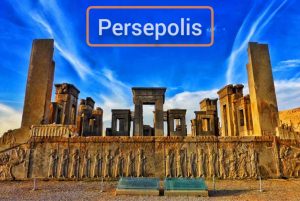

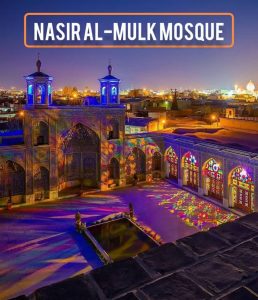
Hello i will come and visit my family in Iran in june , im looking for a good doctor who can fix my nose, i have already had one nose job before for four years ago in turkey, i wanted to now about how much it will cost
Hello, we have had cases like you that had their nose job done in Turkey and were not satisfied with the result. You need to consult with our cosmetic consultants for the exact price, but in Shiraz, our revision rhinoplasty or secondary nose job, starts at 2500$ with the best ENT or plastic surgeon in Iran.
Read more about : Rhinoplasty in Iran
Hello, I am in Iran from 29.09 to 13.10 and would be interested in a nose job. Are there any appointments available in this period? What would be the procedure? With kind regards
Asra Dadkhah Aseman
Hello Asra
Thank you for contacting Iranian Surgery
Before travelling, you need to send us your basic information with pictures of the nose so that we can form a profile for you. After that we can book you an appointment for you depending on your situation, the city of treatment, your specialist, hospital, and the area of your hotel.
For more information and free consultation please contact our client consultation team on WhatsApp number: 00989019290946
Sincerely